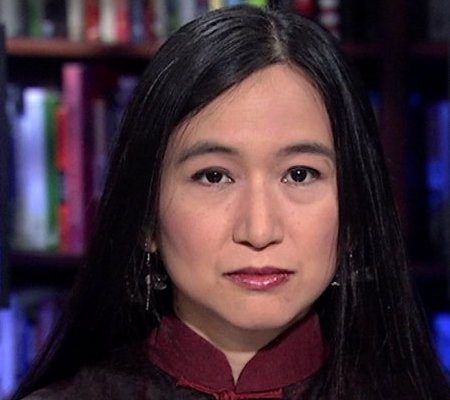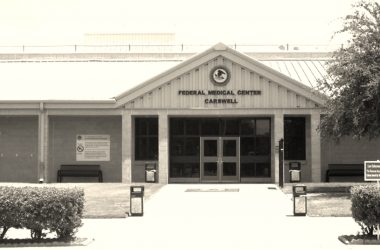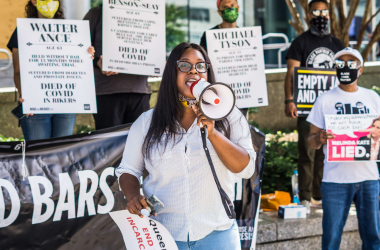I first started corresponding with Marilyn Buck in late 1995/early 1996. I was a first-year college student trying to find a way to do prisoner solidarity work and feeling frustrated with the male-dominated prisoner rights/abolition movement I was encountering. (This is not to say that everyone I came across this year was a sexist or patriarchal pig. I met many wonderful men involved in doing prison abolition/prisoner support work too, but was extremely frustrated with the seeming blindness to gender issues)
Then, someone
suggested that I shift my focus from the supposedly-gender neutral
(but, in reality, very male) prisoner rights movement to concentrating
on women. Not knowing any women behind bars, I flipped through a
newsletter of the ABCF (Anarchist
Black Cross Federation) and an article by Marilyn Buck on why sending
pornography was not the same as political support. (This is an
oversimplification of her argument. I have long since
lost/recycled/donated the original newsletter and wouldn’t even know
where to begin looking for that article now.)
After a summer’s worth of militant actions and direct action protests in NYC where my efforts to photograph police brutality had resulted in nothing more than badly underexposed film, I had also decided to study photography. I could not count on riots to coincide with my weekly photo assignments and so I began turning my eye towards capturing life around me. I took photos while I did Food Not Bombs. I took photos of the summer campers and squatters that I met on Avenue A and in Tompkins Square Park. I took photos at the punk shows at ABC No Rio where I volunteered to do door but very rarely ventured downstairs to see the bands play. I even photographed protests and confrontations with the police but, having witnessed police smashing cameras of accredited photojournalists, I was skittish about getting too close with the camera I was borrowing from the school.
I had read that
Marilyn had taught photography at some point before her incarceration
(She actually was a teaching assistant in a photography course, not the
actual teacher, she corrected in her first response to me.), so I
began sending her samples of my work. In retrospect, they were awful.
Protest shots largely consisted of far-away shots with lots of the
backs of people’s heads. Others were, frankly, not that interesting.
Marilyn could have been blunt and said, “These are awful. You should
put down your camera and stop wasting time and resources on something
that clearly isn’t your forte.” Instead, she always found something
encouraging to say about them. She would comment on the crazy
criss-cross that the bare tree branches made above the heads of the
people surrounding the police and arguing their right to serve free food
in the park. She would find some other positive quality about equally
bad photos.
Despite this long history, I actually knew
fairly little about Marilyn, especially her life before incarceration.
Our correspondence was always fairly brief (probably because she
received so much mail) and very much focused on the present.
Last night, two separate friends sent me a link to this article about
Marilyn’s life. It filled in so many gaps in my knowledge about her and
reminded me, once again, of how wonderful a woman and comrade she is. I
look forward to getting to know her under the safelight at ABC No
Rio’s darkroom.
The article about Marilyn (which I urge everyone to read) is here:
http://theragblog.blogspot.com/2010/05/warrior-poet-marliyn-buck-no-wall-too.html
and, for your viewing pleasure, here are some of my more recent
photographic works. My earliest photos (the ones that I haven’t thrown
out because many of them really were awful) are buried in boxes which
means that you’ll have to wait for the comparison post.



Buy Resistance Behind Bars:
Buy Don’t Leave Your Friends Behind:




